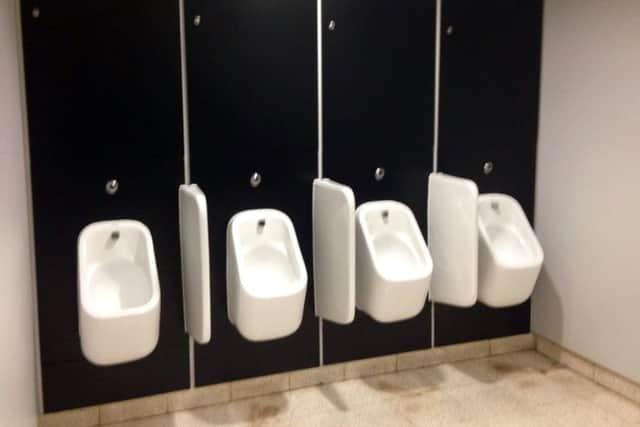How public toilets have become a key political issue – Gina Davidson


The old saying what goes around, comes around, seems to apply not just to misdeeds, but to historical political battles. Fights which appeared to have been won by previous generations, seem to be making a bigger comeback than the Irish border. Rights won by untiring campaigners of old are once again requiring a doughty defence.
For women there are many fronts on which to, figuratively, take up arms: the murder of women by men is yet to be taken seriously by politicians as a misogynistic act – 77 so far this year, 145 last year, that was one woman dead every 2.5 days; there’s the low level of rape convictions; the recognition of the sapping abuse of coercive control; being sacked because you want maternity leave; and of course, the stubborn unshifting pay gap. All vital issues which so many women are attempting to make legislators and others take on board.
Advertisement
Hide AdAdvertisement
Hide AdSo you wouldn’t think that women would now have to re-fight for the right to pee in their own public loos. Yet there’s a trend afoot to make toilets “gender neutral” which is forcing just that.


The Old Vic Theatre in London took to social media this week to boast about how it had transformed its toilet provision for theatre-goers, doubling the number of ladies’ loos.
In fact what the theatre had done was allow men access to all 42 toilet facilities, 18 with urinals, leaving women access to just 24 – but all shared with men. So in reality there are no longer any women-only loos.
No doubt the move to be inclusive or “gender-blind” was made in good faith – but probably not with any thought given to women of faith. Or women who have no faith for that matter, but just an inherent belief that they don’t want to have to see men peeing at urinals when they need to spend a penny. Likewise, it cannot surely be a move welcomed by men.
It’s an issue that is being raised by the feminist author Caroline Criado-Perez, whose book Invisible Women has been hailed by the Scottish Government and inspired it to set up its own working group on sex and gender to look at the biological and physical differences of men and women and the impact this has in terms of access to services. Toilets being one of the most basic.
Peeing is political. Reducing the availability of women-only loos has a major impact on women’s ability to have a public life.
‘Urinary leash’
It seems we have forgotten that there was a fight to even have women’s loos in public places in the first place. Originally they were created just for men, and Victorian women were never able to travel far from home – tied by a ‘urinary leash’ they could only go as far as their bladders would allow.
Long before the Suffragettes, the Ladies Sanitary Association was campaigning for women’s toilets across the UK, while the Union of Women’s Liberal and Radical Associations fought for working-class women to have public toilets in London’s Camden borough. But like most of Britain’s great social upheavals, real change only came with the advent of war – a female workforce meant women’s toilets became a necessity. Later, the rise of department stores meant toilets were needed so the female pound could be spent alongside a penny.
Advertisement
Hide AdAdvertisement
Hide AdWomen have fought for loos, so they could have a life outside of the home. They were segregated to ensure women’s privacy and dignity were protected – as was that of men. Now, 150 years or so on, the battle is having to be fought again. While Unesco recommends single-sex toilets in schools and colleges, in order to boost women’s access to education, in Scotland local authorities are making school toilets “gender neutral”, removing female pupils rights to a space where they can pee without boys around. At a time of bodily changes and the onset of menstruation, high schools in particular should be ensuring that girls have their own toilets.
Women don’t need to be retreading old arguments about the need for their own loos. Public authorities and organisations should be spend their pennies on installing more loos, rather than reducing women’s access to the most basic of facilities.